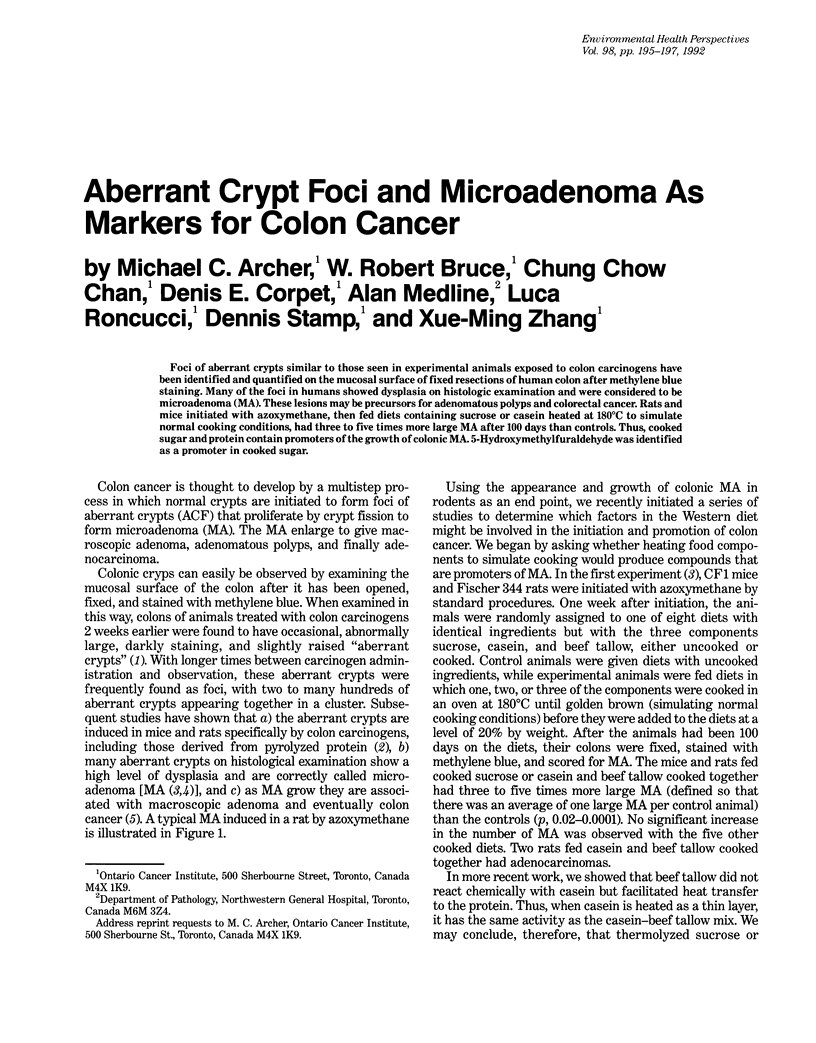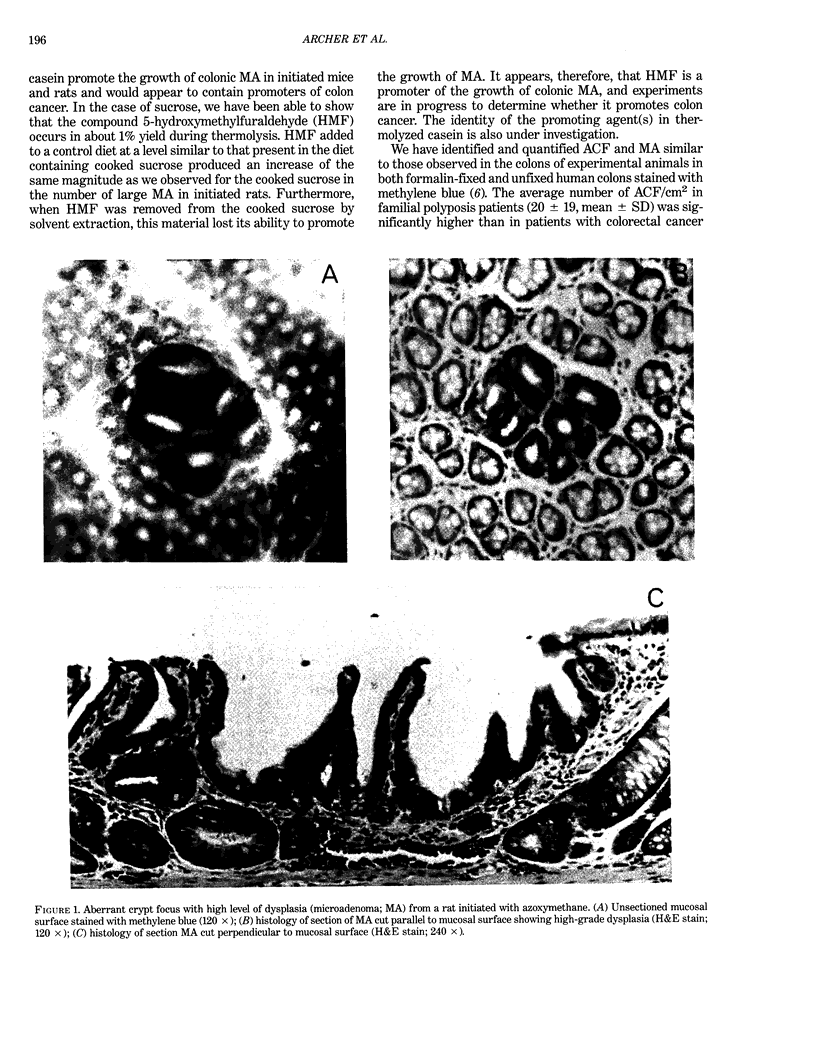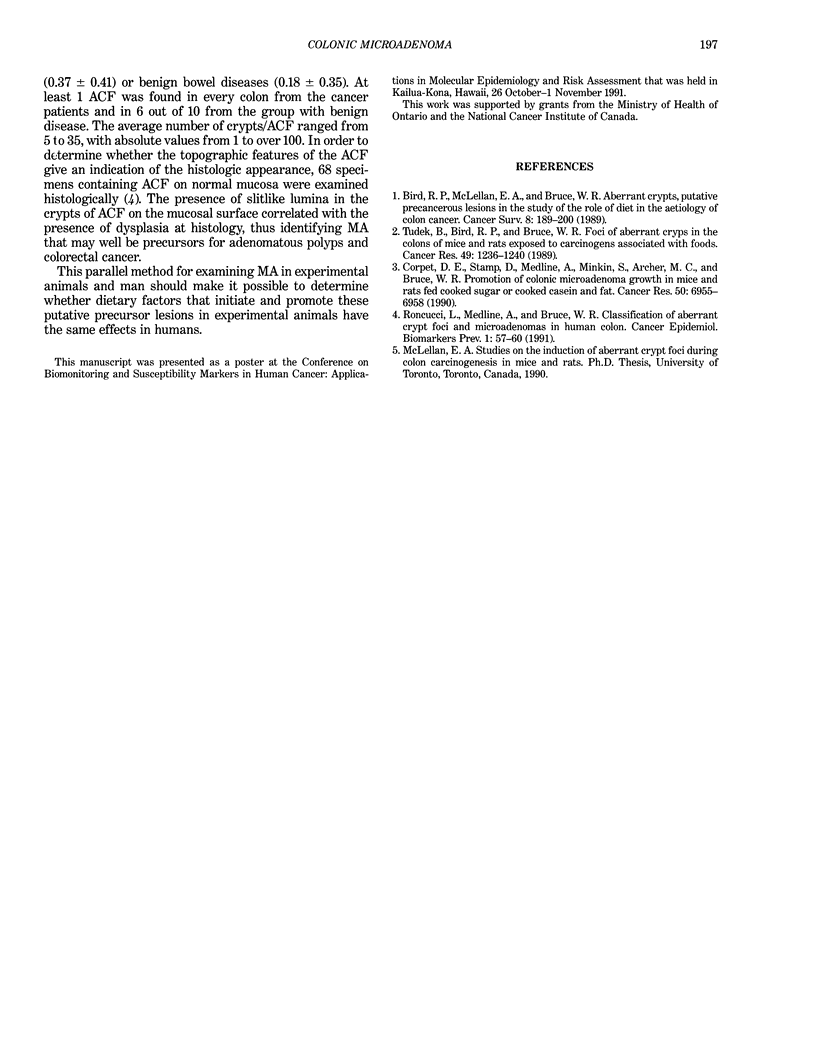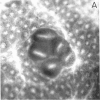Abstract
Foci of aberrant crypts similar to those seen in experimental animals exposed to colon carcinogens have been identified and quantified on the mucosal surface of fixed resections of human colon after methylene blue staining. Many of the foci in humans showed dysplasia on histologic examination and were considered to be microadenoma (MA). These lesions may be precursors for adenomatous polyps and colorectal cancer. Rats and mice initiated with azoxymethane, then fed diets containing sucrose or casein heated at 180 degrees C to stimulate normal cooking conditions, had three to five times more large MA after 100 days than controls. Thus, cooked sugar and protein contain promoters of the growth of colonic MA. 5-Hydroxymethylfuraldehyde was identified as a promoter in cooked sugar.
Full text
PDF


Images in this article
Selected References
These references are in PubMed. This may not be the complete list of references from this article.
- Bird R. P., McLellan E. A., Bruce W. R. Aberrant crypts, putative precancerous lesions, in the study of the role of diet in the aetiology of colon cancer. Cancer Surv. 1989;8(1):189–200. [PubMed] [Google Scholar]
- Corpet D. E., Stamp D., Medline A., Minkin S., Archer M. C., Bruce W. R. Promotion of colonic microadenoma growth in mice and rats fed cooked sugar or cooked casein and fat. Cancer Res. 1990 Nov 1;50(21):6955–6958. [PubMed] [Google Scholar]
- Roncucci L., Medline A., Bruce W. R. Classification of aberrant crypt foci and microadenomas in human colon. Cancer Epidemiol Biomarkers Prev. 1991 Nov-Dec;1(1):57–60. [PubMed] [Google Scholar]
- Tudek B., Bird R. P., Bruce W. R. Foci of aberrant crypts in the colons of mice and rats exposed to carcinogens associated with foods. Cancer Res. 1989 Mar 1;49(5):1236–1240. [PubMed] [Google Scholar]





